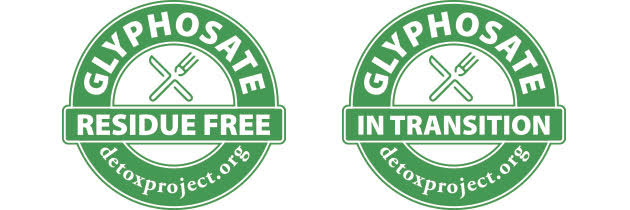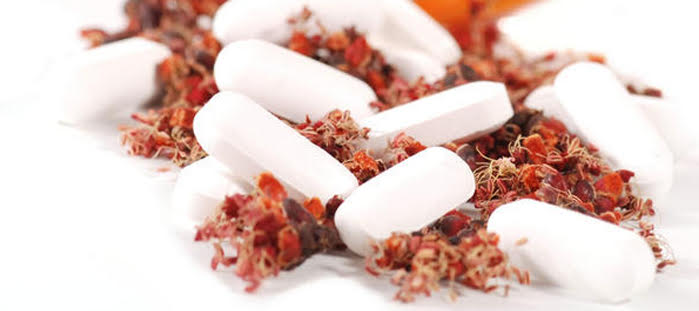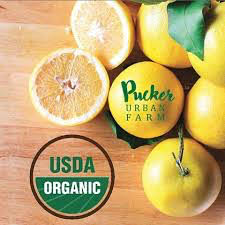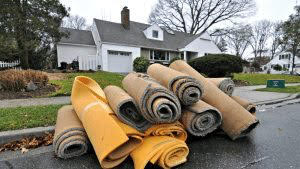
Art | Resources
Papa John’s Pizza Goes (a little bit) Organic

Pizza with a few organic ingredients isn’t new or unusual (type “organic pizza” into your favorite search engine and you’ll probably find a local pizzeria that has organic ingredients—I found one right close to me here in Florida with organic tomatoes and local ingredients).
But the news here is that Papa John’s— a chain pizza corporation—is doing an organic pilot program using organic Roma tomatoes, mushrooms, green peppers, and yellow onions.
It’s a step in the right direction.
Organic blogger Max Goldberg thinks this is important and significant.
Read his interview with Papa John’s Chief Ingredient Officer (that’s really his title).
LIVING MAXWELL: Papa John’s Pizza Makes the Decision to Go Organic — Why This is So Important
New Program Verifies “Glyphosate-Free”

The Detox Project, who has been offering tests for humans to detex the presence of glyphosate pesticide in their bodies, is now moving into testing food for glyphosate residues and allowing the produce that passes to display the Detox Project glyphosate seal.
Last year they tested many popular processed foods for glyphosate residues and found m and published aa list of food products that do contain the pesticide in Glyphosate: Unsafe on Any Plate.
Now they are working on identifying the foods and food products that don’t contain residues of glyphosate.
They are currently inviting food producers to register for the process, so don’t rush to your local store and look for the seal.
There are two levels of verification.
Glyphosate Residue Free — “To be certified Glyphosate Residue Free, your product must have no glyphosate or AMPA residues down to the limits of laboratory detection (between 0.1 ppb and 20 ppb depending on the product), a standard that is tougher or the same as the U.S. Environmental Protection Agency’s Maximum Residue Limits (MRL).”
Glyphosate in Transition — “Glyphosate In Transition products have to show a low detection level (under 200 ppb of glyphosate and AMPA) in the first third party testing and then have to reduce this level to ‘Glyphosate Residue Free’ within a 2-year period.”
The transition seal tells consumers that a company is working toward eliminating glyphosate, which is good to know, but not good to eat. To me, “glyphosate in transition” means the food has been tested and it’s known to contain glyphosate.
It will be interesting to follow this and see if organic foods tested turn out to be glyphosate-free (as we assume they are) and who gets the transition rating.
LET’S DO SOMETHING ABOUT TOXIC AUTO INTERIORS!

I received the following email this week from a woman who wants to take some action to get toxics our of automobile interiors. I’m all for a collective effort on this and would like us all to work together on this. Please post in comments your support for this and any experiences you’ve had with toxic auto interiors, difficulties finding nontoxic cars, and anything else related. Thanks!
Interestingly, as I was looking for an image for this post, I found the image above on an article about stricter regulations on auto interiors in China! The article was published in The Hog Ring a place for auto upholstery professionals to read news, connect and talk shop” Maybe this is a place to start a discussion on this topic.
Question from Maria
Hi Debra,
I sued a Dealership and Mfg. for a brand new car that I bought that made me very ill.
I also filed as the first case with the government. they actually sent an independent inspector out who confirmed the toxins within the car.
I’ve been involved in these issues for approx. 30 years. I am looking for speakers, people that have experienced symptoms, etc. from new cars, any legislation. I would like to submit a proposal to our state to write laws, label cars as we do foods, investigate., witnesses , etc.
Any info., assistance, etc. would be appreciated.
Years ago EPA told me I was 7 years ahead of them in investigating the auto interiors and I was shocked to find out 20 years later that it still was not done.
I am willing to get this moving but need to get enough people to show there is a problem.
Thank you!
Unscented Bath Tissue
 This is the unscented bath tissue I use.
This is the unscented bath tissue I use.
Question from Kristal
Hi Debra,
I, along with many others, are having a terrible time finding bath tissue (toilet paper) that we can use. Charmin Basic worked well for all of us, but it has now been discontinued, and none of us have been able to find another tissue we can use without allergic reactions. Trying to find out what ingredients are causing this reaction is impossible, because they will not disclose ingredients contained in these products.
If you have any information, please share it…and in the meantime, I am planning on starting a petition to require ingredients to be disclosed on labels of all products that come in contact with the skin of consumers.
We also can’t find ingredients used in laundry detergents unless manufacturers choose to put them on their labels. I guess it’s not required. Any suggestions?
I subscribed to your page, but have not received a confirmation in my email yet so I can respond.
I have created a petition for Charmin to bring back Charmin Basic, so if you know anyone who might want to sign it and pass it on to others, that would be great. I did, at one time, manage to get a list of its ingredients, and I believe it contained Virgin Wood Pulp and a small amount of some kind of adhesive or glue to hold it together. Very few ingredients…three or less, is what I think they told me. I found 32 people who posted on Charmin’s facebook page who could not or would not use the replacements for various reasons, including many who had allergic reactions, and they could not find anything else on the market that was working for them. Just like me. Here’s a link to the petition:
www.ipetitions.com/petition/bring-back-charmin-basic
I am going to need to find people willing to sign a petition to submit to my legislators in Washington regarding requiring disclosure of ingredients on labels of all products that come in contact with skin, so I’m hoping to have my ducks in a row before I create the petition. I’d like to know I will have some support behind it. My thinking is that if they won’t tell you what is in these products, there is a good reason they are hiding that information.
Debra’s Answer
Good for you to do something about ingredients. I’m totally in agreement with you and will help however I can.
Did you see my recent post about Californians overwhelmingly in support of right-to-know legislation for cleaning product ingredients ?
We DO have a right to know all the ingredients in all products on the market. And we need to assert that right.
Food Safe Glass

Question from Chris
Hi Debra,
While looking at a large glass jar at Oriental Trading Wedding I noticed it was labeled “not food safe” use only wrapped candy. I was under the impression that all glass was food safe. I was reading your blog and am very curious niw about glass quality. Many of us store our foods in these jars.
Thanks.
Debra’s Answer
No, not all glass is food safe. There are many types of glass used for many purposes, each with it’s own characteristics.
The most common method of making glass is to heat raw materials into a molten liquid and then rapidly cool the liquid in such a way that the atoms remain in a random state.
The raw materials are various powders which include network formers, fluxing agents, property modifiers, fining agents, and colorants.
The two most common types of glass used in consumer kitchenware are soda-lime silicate glass and borosilicate glass.
Food safe glass is regulated by the federal Food & Drug Administration (FDA). Glass (and plastic) containers containers are consider “indirect food additives” by the FDA. These are substances that may come into contact with (and end up in) food from packaging or processing equipment, but are not intended to be added directly to food.
The FDA has determined that both borosilicate glass and soda-lime silicate glass are Generally Regarded as Safe (GRAS). The GRAS designation is given to substances added to food directly or indirectly that are considered to be safe by experts.
Here is a whole study about food-grade glass, prepared by The Glass Packaging Institute: Compliance of Glass Packaging with Human and Environmental Health and Safety Toxic—in—Packaging Requirements.
This document states:
Preference for glass has persisted throughout the ages and in all cultures due in large part to its safety, impermeability, and durability. In food packaging applications, glass has long been recognized as the gold standard, due in significant part to its being virtually inert, meaning that it does not react with other elements and forms no new compounds when it comes into contact with other chemical agents or compounds. As a result of this virtually inert quality, glass does not interact with the foods or beverages contained in it, and consequently does not affect the flavor of its contents. Similarly, glass is virtually impermeable to oxygen, so does not affect — and is indeed protective of — the freshness of its contents. Consequently, glass does not require the addition of any food additives or preservatives in order to maintain flavor or freshness, unlike many other food packaging materials. Glass has long been recognized as the preferred material for food packaging, due to this virtually inert quality and its protection of the food or beverage that it contains.
It also states:
Unlike other packaging materials, glass packaging is manufactured at extremely high heat with simple components, resulting in oxidation of most trace amounts of heavy metals that may be present in the raw production materials [italics mine]. For this reason, and because glass packaging is virtually inert, glass packaging properly does not present any significant health and safety or environmental concerns.
Therefore even if there were any heavy metal impurities in the raw materials, they would not be present in the finished glass product.
I haven’t read the entire 50-page document so there may be more relevant information. But these are the key items for this discussion.
Soda-lime-silicate glass is made from three ingredient—sand, lime and soda ash. No lead or other heavy metals are added to this glass for any reason. Borosilicate glass is made of by adding boric oxide to the basic soda-lime-silica mix.
Lead is added to glass to make it sparkle in the light. But this is very clearly labeled with lead warnings. This is limited to “cut crystal.” And the lead WILL leach into foods and beverages. Other types of decorative glassware may also contain lead and not be so labeled because it is not intended for contact with food.
For food storage, only use glass containers intended to be used as food containers. Those will be made with a food-safe glass.
Decorative glass items are usually NOT food safe and probably contain unknown substances that can leach into food.
Can I Keep My Old Carpet?
Question from Lynnette
Hi Debra,
I so appreciate what you do and your website. It has been a life saver with my MCS.
I have 25 year old carpeting. It was one of the triggers to getting MCS and other health issues but it took 10 years after installing to find out about MCS.
My question now is I still have the carpets in my house. I heard that they have off-gassed and safe after six years. That is why I didn’t get rid of them. But now I am wondering if they are exposing us to chemicals in the carpets that might break down and go into the air and we breath them. If they are safe after all these years I don’t want to replace them at this time but if bad I am ready to pull them up and replace with a safer flooring.
Are old carpets o.k. or not?
Thanks so much.
Debra’s Answer
In my experience as a consultant, who has been to the homes of many clients with MCS, I just got to a point where if someone had carpet of any age I said, “Take out the carpet!”
Often it’s the last thing to go, but people didn’t start recovering until after they finally took out the carpet.
I remember telling this to one woman and she said, “OK let’s do it right now!” And we both got on our hands and knees and starting pulling out the wall-to-wall carpet. When we finally had it out of the house she said, “Wow! I didn’t know this would make such a difference. I can breathe!”
It would be interesting for you to do the HomeLab.com air quality monitoring and see how your carpet registers on the air quality monitor. That would give you real data about what you need to do.
The problems with air quality from carpet goes way beyond toxic exposures from synthetic fibers and finishes. I once took up a carpet and there was a whole nest of carpenter ants eating a hole in the floor under the carpet. And there’s padding and dust and mold and padding…
If you’re ready, my advice would be to just remove it and get a good nontoxic floor that you can clean.
Need Unscented Spray for Air Conditioner Coils
Question from Audrey
Hi Debra,
I live in South Florida so as you know I use the air conditioning a lot.
I have a company that services it and they are coming for the yearly check up in early May. They use deodorizer to spray the coils which as a MCS person I don’t allow.
Would it be okay to have the ac coils sprayed with a mixture of 1/2 vinegar and 1/2 water?
If not, do you have any suggestions what can be used? Thanks.
Debra’s Answer
I actually got a new air conditioner a couple of years ago so I haven’t had it checked for a while.
I don’t know it there is some reason why you shouldn’t use vinegar in an air conditioner.
Readers, any experience with this?
Safest Over-the-Counter Antihistamine?

Question from Betty
Hi Debra,
I am curious to know what you think is the safest over-the-counter antihistamine to take. I’m sure it is best to avoid taking anything, but if someone has to, which do you think has the fewest additives, dyes, preservatives, etc.?
Thank you!
Debra’s Answer
I can’t remember the last time I took an antihistamine. Forty years I think.
I don’t think one OTC antihistamine is better than another. As far as I know there are no “natural” pharmaceuticals in the same sense that we have “natural” foods without artificial colors and flavors and presenvatives.
There are pharmaceuticals and there are natural alternatives.
My best suggestion is to search online for “natural antihistamines” or choose an alternative healthcare provider to help you with this issue. Herbs, homeopathy and other alternative practices can help get to the root cause of the problem you are seeking an antihistamine for.
Even some foods have an antihistamine effect.
You’ll find lots of natural solutions online.
Turmeric is often mentioned as an antihistamine, also vitamin C.
Readers, what do you use for antihistamine?
Behr Premium Plus Paint
 I first heard of this paint a about 18 months ago, when a reader called for a consultation because her contractor wanted to use this paint. It’s zero VOC and self-priming so I told her to go ahead. When she called me for another consultation, she thanked me profusely for recommending this paint. She said, “It has NO ODOR!” I’ve known this woman for years and she is pretty chemically sensitive.And, she said, they did really well at matching colors when you bring in an object for color matching. She was totally happy with this paint. As I write this, it’s now $23/gallon at Home Depot.
I first heard of this paint a about 18 months ago, when a reader called for a consultation because her contractor wanted to use this paint. It’s zero VOC and self-priming so I told her to go ahead. When she called me for another consultation, she thanked me profusely for recommending this paint. She said, “It has NO ODOR!” I’ve known this woman for years and she is pretty chemically sensitive.And, she said, they did really well at matching colors when you bring in an object for color matching. She was totally happy with this paint. As I write this, it’s now $23/gallon at Home Depot.
Pucker Urban Farm
 A small “boutique family farm delivering the highest quality lemons and lemon products. All of our organic fruit is hand picked fresh from our trees to fill your order. And their organic certification certificates are right on the home page.
A small “boutique family farm delivering the highest quality lemons and lemon products. All of our organic fruit is hand picked fresh from our trees to fill your order. And their organic certification certificates are right on the home page.







